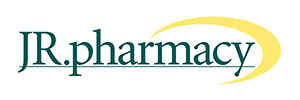This is a question to which you must understand the answer. With continuing volatile trading conditions, managing cash flow in the pharmacy is vital because external factors often restrict cash when it is most needed.
The enormity of the 1 December 2013 price reductions on molecules in the dispensary were not felt until it came time to pay the December bills at the end of January 2014.
If we then project out to February when most pharmacists will have PAYG income tax instalments due you can start to see the pressure being put on cash flow in the current year. It may be possible to vary (reduce) the quarterly PAYG instalments depending on interim trading results (note, do not use sales as the measure of profit).
However, the tax payable on the 2013 financial year may be an issue because that year was one of the most profitable for many pharmacies driven off the higher GP$ per script in the dispensary. Due in May 2014, the payment falls after the next round of price reductions on 1 April 2014 and this payment cannot be varied.
I have, on previous occasions, highlighted the need for timely and accurate reporting of financial information. The report that compliments the others, and is more important, is the cash flow statement. It highlights where the money went during a particular period. You use information in the profit and loss and balance sheet to determine the cash flow and therefore it should be run and reviewed at the same time (i.e. regularly). The process should be automated to feed off the other reports to save time and ensure accuracy.
Many pharmacies, over the last six months in particular, have found cash tight at times. Assuming the pharmacy is profitable, the five big items restricting cash are:
- Too much stock not selling fast enough (note any excess stock from Christmas that needs to be moved on);
- High tax commitments based on prior year’s profit payable now while trading conditions have flattened off;
- Suppliers reigning in or at least tightening trading terms (say 60 days to 30 days);
- Repayment of principal off loans; and
- Proprietor drawing’s.
You also need to use the report to forecast what will happen to the pharmacy with the current and future price reductions to the various molecules and when these price reductions will occur. These reductions will influence stock values, invoices payable and flow on effect from gross margin movements. Many pharmacies carrying large trade (wholesaler) or bank debt will not be certain of the affordability of this debt without the cash flow statement and forecasts.
Add to this the changed attitude of the banks over the last two years where applications for cash flow funding are becoming more difficult to get approved. In many cases the funding will only be extended for shortened periods of time. The banks now want to know you are on top of the cash flow and are requesting this sort of information to confirm the position.
Understand the cash flow now and how to remedy the position. Borrowing more money either short or long term is not the only solution.
The relevant significance is of course to be nimble enough in the pharmacy to react quickly to internal and external forces affecting cash, understand where it is tied up and how to release it.
Norman Thurecht, Partner, JR Pharmacy Services





